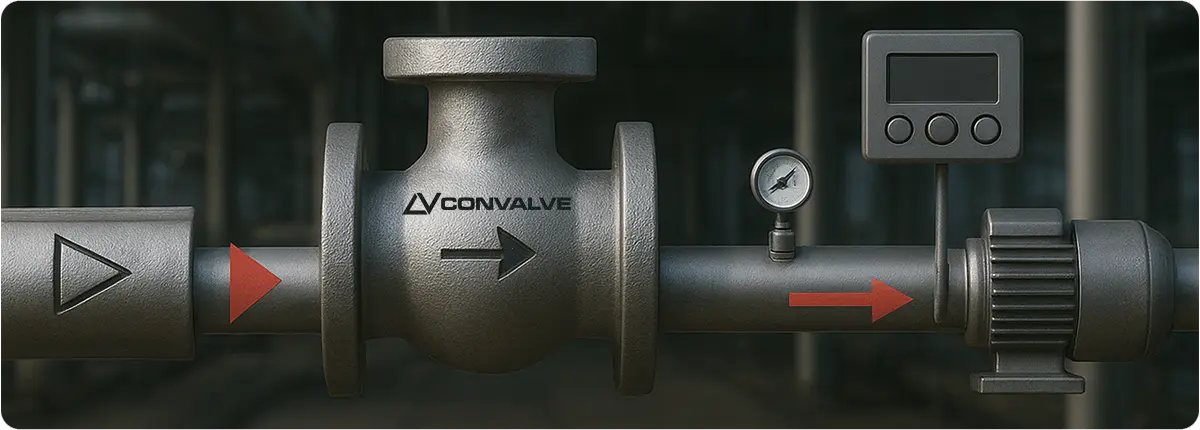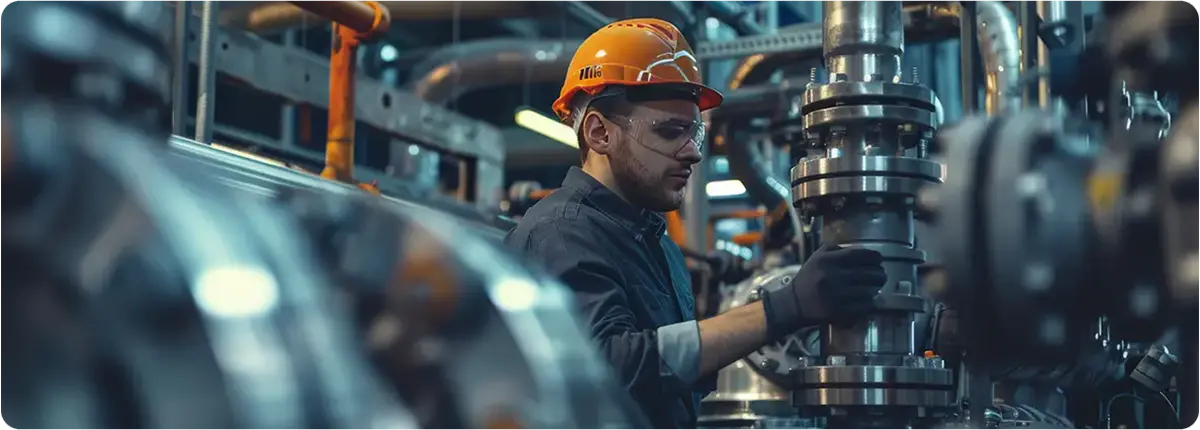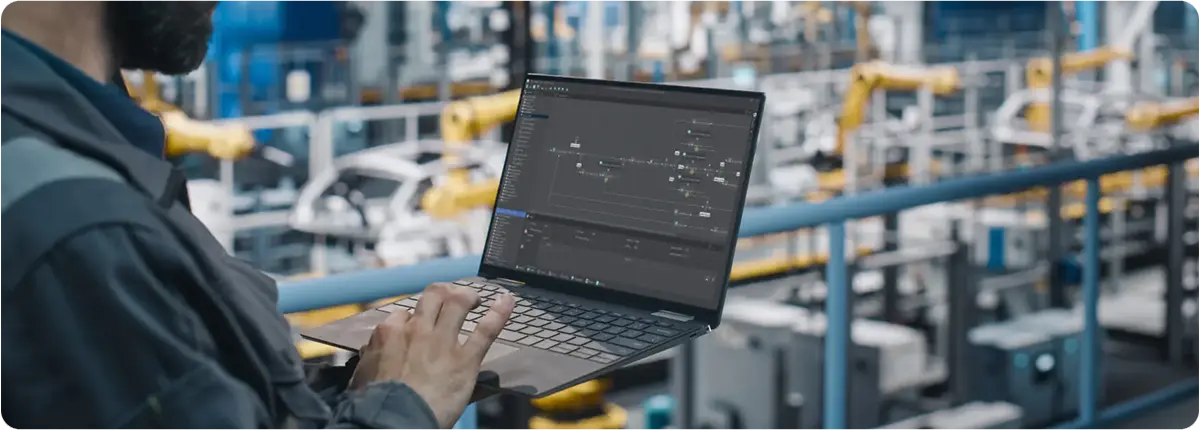Reverse flow in piping systems can trigger water hammer, cavitation, leaks, and even catastrophic equipment damage. The root causes are usually pressure fluctuations or sudden changes in flow direction. By combining the right check valve design, proper hydraulic analysis, and advanced control strategies, operators can minimize the risks associated with reverse flow.

THE RISKS OF REVERSE FLOW
Water Hammer: When flow is abruptly stopped or reversed, shock waves travel through the pipeline. These pressure spikes stress welds, seals, and supports, often resulting in loud vibration and mechanical failure.
Cavitation: Local pressure drops below vapor pressure, creating vapor bubbles. Their collapse in high-pressure zones leads to pitting, seal wear, and pump impeller erosion.
Valve Slam and Leakage: Swing check valves are prone to slamming against the seat during backflow events, accelerating wear and increasing the chance of fugitive emissions.
Overpressure and Contamination: Repeated reverse flow generates high-frequency pressure surges. These can exceed design limits, damage fittings, and increase contamination risks in potable water or chemical pipelines.
HYDRAULIC FUNDAMENTALS: QUANTIFYING THE IMPACT
Joukowsky Equation (water hammer pressure rise):
ΔP = ρ · a · Δv
Where:
• ρ = fluid density (kg/m³)
• a = wave speed (m/s)
• Δv = sudden change in velocity (m/s)
Darcy–Weisbach (frictional pressure loss):
ΔP = f · (L / D) · (ρv² / 2)
These equations highlight why smoother surfaces, reduced velocity changes, and controlled closure times are critical to mitigating reverse flow damage.
CHOOSING THE RIGHT CHECK VALVE
Check valves are the first line of defense against reverse flow. Different designs behave differently:
| Valve Type | Closing Dynamics | Water Hammer Risk | Typical Applications |
|---|---|---|---|
| Swing | Gravity/pressure driven, long stroke | High – prone to slam | Simple installations, non-critical duty |
| Spring-Loaded | Positive, rapid closure with spring force | Low | Vertical or horizontal service, clean fluids |
| Silent / Non-Slam | Short-stroke piston with spring | Very Low | High-pressure water, chemical lines |
| Double Check | Dual barrier | Low | Low-risk systems (irrigation, domestic water) |
Tip: The valve’s cracking pressure must match process conditions. Too low = chatter; too high = excessive pressure loss.
ADVANCED SOLUTIONS: ASSISTED VALVES AND VACUUM BREAKERS
Power-Assisted Valves (PAV): Actuated valves (electric, hydraulic, pneumatic) can provide controlled closure during pump trips or flow disturbances. When paired with a check valve, they absorb surge energy and prevent severe water hammer.
Vacuum Breakers: In low-pressure scenarios, vacuum conditions can form and promote cavitation. Installing air-admittance valves or vacuum breakers prevents collapse by allowing controlled air entry where tolerated.
BEST PRACTICES FOR DESIGN AND OPERATION
• Analyze hydraulic profiles (wave speed, closure time, velocity).
• Install check valves close to pumps; use spring-loaded types in vertical lines.
• Opt for damped or slow-closing actuators instead of abrupt shutoff.
• Reinforce pipelines with supports, expansion loops, and anchors to reduce resonance.
• Implement filtration and flushing to prevent debris from damaging valve seats.
• Follow industry standards and codes to ensure compliance and long-term reliability.
CONCLUSION
Reverse flow is not just a nuisance—it is a major operational and safety concern that can shorten equipment life and increase costs. By selecting non-slam or spring-loaded check valves, integrating power-assisted closures, and applying sound hydraulic design, facilities can minimize water hammer, cavitation, leaks, and contamination risks. A proactive design and maintenance strategy ensures safer, more efficient, and more reliable piping systems.

